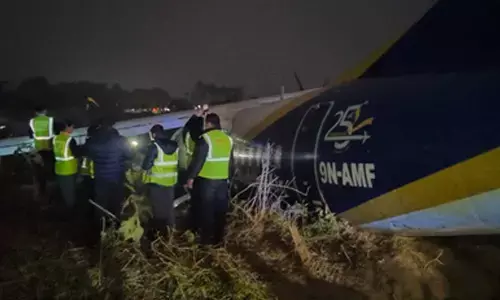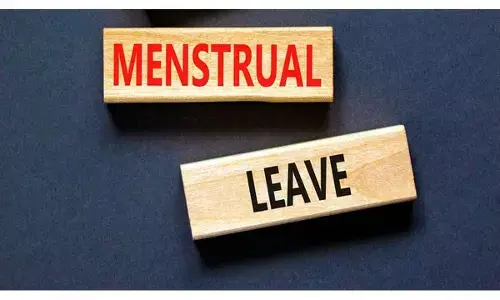Sir Arthur Cotton:a demigod to the people of AP

Among those treasures of our land is water -- fast becoming our most valuable, most prized, most critical resource,” said Dwight David Eisenhower. It is a blessing if properly used -- but it can bring devastation and ruin when consumption is left uncontrolled. Mankind is in a race with disaster
 “Among those treasures of our land is water -- fast becoming our most valuable, most prized, most critical resource,” said Dwight David Eisenhower. It is a blessing if properly used -- but it can bring devastation and ruin when consumption is left uncontrolled. Mankind is in a race with disaster. If the world’s water needs are not met, there is a shipwreck ahead. The inevitable result will be mass starvation, mass epidemic and mass poverty, greater than anything people know today.
“Among those treasures of our land is water -- fast becoming our most valuable, most prized, most critical resource,” said Dwight David Eisenhower. It is a blessing if properly used -- but it can bring devastation and ruin when consumption is left uncontrolled. Mankind is in a race with disaster. If the world’s water needs are not met, there is a shipwreck ahead. The inevitable result will be mass starvation, mass epidemic and mass poverty, greater than anything people know today.
Sir Arthur Thomas Cotton (May 15, 1803, Oxford – July 25, 1899, Dorking) was a British General and skilled irrigation engineer. He devoted his life to the construction of dams across rivers, besides navigation and irrigation canals throughout the British Empire in India. However, he realised his task partially. In 1819 Arthur Cotton joined the Madras Engineers. He also fought in the First Burmese War, and he was knighted in 1861. He was an evangelist with great love for the welfare of people.
Born tenth to Henry Calvely Cotton, Arthur was one of 11 brothers. They all lived illustrious lives in all their ups and downs. In 1818, Arthur joined as a cadet at Addiscombe. This was where cadets for artillery and engineering services of East India Company were trained. Arthur was 15 years old at that time. Later, after the completion of training he was appointed to the ‘Royal Engineers’ as Second Lieutenant in 1819.
As Lieutenant, Arthur began his career with ordnance survey in Wales in January 1820, where he received accolades for his wonderful reports. At the age of 18, he was appointed for service in India. Initially, he was attached to the chief engineer to Madras (now called Chennai). Later on he was appointed an assistant engineer to the superintending engineer of the tank department, southern division, from 1822 to 1824.
Thus, Arthur spent his time partly in the irrigation tank department and in some degree in Military in Burma (now Myanmar).

As soon as he came back from Burma, Arthur took up marine survey of Pamban Passage between India and Ceylon (now called Sri Lanka). He was promoted to the rank of captain in 1828. He was then in charge of investigation for Cauveri scheme in Tamil Nadu. The anicut (dam) across River Cauveri was a grand success facilitating start of major projects on Godavari and Krishna rivers. In 1844, Arthur suggested construction of an anicut with channels, embankments, and roads in the Godavari delta, and prepared plans for Visakhapatnam Port. Finally, work on Godavari anicut was started in 1847.
Soon afterwards, he fell sick and went to Australia handing over the charge to Captain Orr. On his return to India three years later, he was promoted as colonel. He successfully completed the project on the Godavari at Dowleswaram, which is a village near Rajahmundry in East Godavari district of Andhra Pradesh, in 1852. He made best use of local materials like hydraulic lime, quality stone, and best teak wood available in the neighbourhood. The same year he commenced work on Gannavaram Aqueduct.
With the completion of the Godavari anicut, Arthur concentrated on construction of an aqueduct on River Krishna at Vijayawada. The project was cleared in 1851 and completed by 1855. On completing the Krishna and Godavari anicuts, Arthur thought of storages for the waters of these two rivers.

The highly imaginative and dynamic irrigation engineer, Arthur Cotton proposed more ambitious plans of connecting all major rivers of India. He also suggested drought relief steps in Orissa and interlinking canals and rivers. Arthur Cotton retired from active service in 1860 and he was knighted in 1861.
Sir Arthur Cotton was also an evangelist. During his stay at Rajahmundry, he attended the church of the Godavari Delta Mission.
He left India for England in1861. During the period 1862-1863 Arthur Cotton revisited India and gave his valuable suggestions on some river valley projects.
His astonishing work in India was highly commended and he was honoured with Knight Commander of Supreme India (KCSI) in 1877. His evangelical preachings and spiritual outlook had strengthened him till the end of his life on earth. This good man attained final emancipation at the ripe age of 96 years on July 24, 1899.
With his monumental achievements, Sir Arthur Cotton endeared himself to the millions of Indians, and his name is enshrined most appropriately in the hearts of people, particularly the people of Andhra Pradesh to whom he was a demigod. The new barrage constructed across the Godavari upstream of Dowleswaram Anicut was most appropriately named after him and it was dedicated to the nation by the then Prime Minister of India in 1982.
Here is an episode that reveals Arthur Cotton’s high sensitivity, keen observation and alertness: “Thomas Cotton went to attend an interview for the post of an engineer. There were three candidates including him.
All that the selectors told them was to have a ‘good sleep’ and were provided three separate beds. The candidates did what they were told. While the other two candidates slept happily, poor Cotton could not get a wink of sleep. However, after some time, he slept happily. The next day, all the three were asked by the selectors if they had slept happily. Though all the three nodded, Arthur added that he felt restless while on the bed -- bending down, he realised that one of the four legs of the bed was a little high. To his surprise he found a pound (coin) beneath one of the legs which he promptly removed. That was the catch set by the selectors.” The selection of the right candidate is obvious.
Renowned writer John Henry Morris in his book ‘Godavari’ had this to say about the work of Sir Arthur Cotton: “The Godavari anicut is, perhaps, the noblest feat of engineering skill which has yet been accomplished in British India. It is a gigantic barrier thrown across the river from island to island, in order to arrest the unprofitable progress of its waters to the sea, and to spread them over the surface of the country on either side, thus copiously irrigating the land which has hitherto been dependent on tanks or on the fitful supply of water from the river. Large tracts of land, which had hitherto been left arid and desolate and waste were thus reached and fertiled by innumerable streams and channels.”
In 1878, Arthur Cotton had to appear before the House of Commons Committee to justify his plan to construct an anicut across the Godavari. A second hearing in the House of Commons followed by his letter to the then Secretary of State for India revealed his earnest desire to construct an anicut across the Godavari. The last sentence in his letter read: “My Lord, one day’s flow in the Godavari during high floods is equal to one whole year’s flow in the Thames river of London.” Regrettably, the British Government’s indifference to his proposal left him dejected.
To commemorate the great Briton’s yeoman services for the development of agriculture in Andhra Pradesh, a museum named after him was set up at Dowleswaram. It was inaugurated on February 25, 1988, by the then Chief Minister NT Ramarao. The museum is housed in the very building that was previously occupied by the executive engineer, Godavari Headworks Division, Dowleswaram.
The idea behind setting up the museum was to enlighten the people on how that great engineer constructed the mighty anicut in those days and converted the lands of East and West Godavari districts into fertile areas producing a variety of crops, particularly paddy. The exhibits include pictures which show the working of the dam and the tools used during its construction. The museum also explains how the present Sir Arthur Cotton Barrage was constructed with advanced engineering skills.















